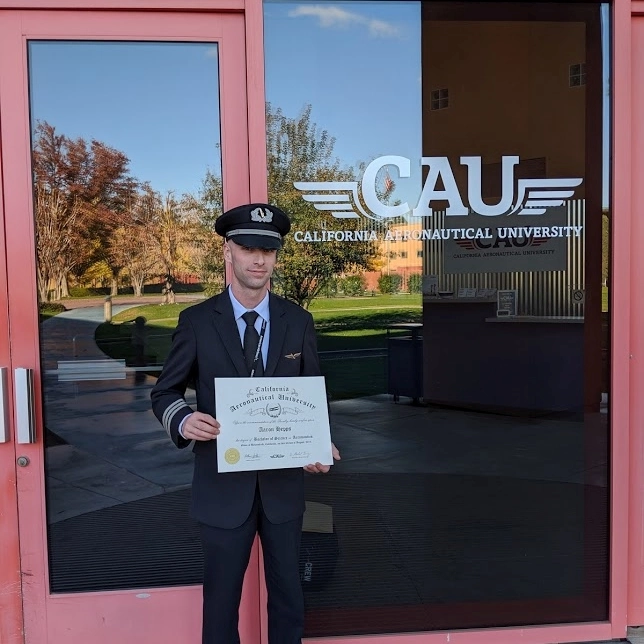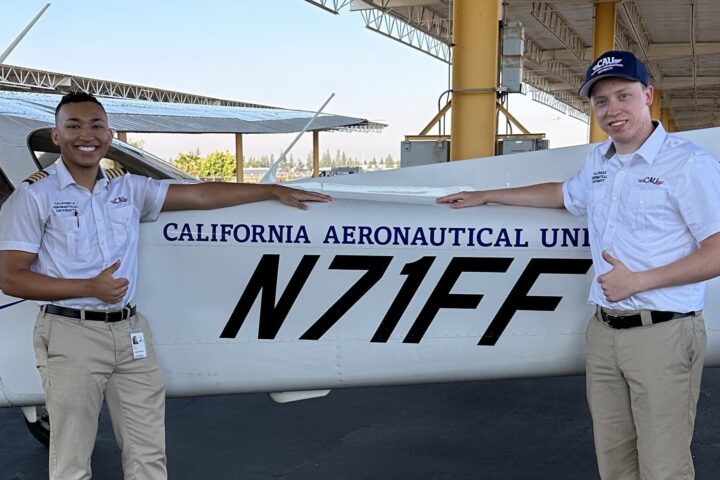Aviation terminology is essential for pilots to effectively communicate with those in aviation – here’s why.
One of the first ways an air traffic controller can differentiate an amateur or new pilot from a professional or seasoned one is the ability to use and understand aviation terminology. For the most part, these consist of acronyms. They can seem intimidating and confusing at first, but the more one flies, the faster “aviation talk” becomes a secondary language. When a pilot slips these terms into conversation with someone unfamiliar with aviation, the experience gap quickly becomes apparent.
Some of these terms appear on the exam which private pilots must take in order to earn their certificate. Many of them quickly become second nature as they are used on every flight. Others require memorization or reference to the Aeronautical Information Manual (AIM), the publication from the Federal Aviation Administration (FAA) which details aviation terminology and information all pilots must know and understand.
General Aviation Terminology
These are acronyms and terms all pilots should recognize and appear in nearly every flight or operation. Knowing the general terms are essential to aviate safely and communicate effectively with other pilots and air traffic controllers. These are usually the first terms which student pilots understand since they appear so often. While some memorization is required, particularly with the phonetic alphabet, these are often mastered quickly.
ATC: Air traffic control, or air traffic controller. This refers to the system of federal employees working in airport towers, air traffic control centers, or area control centers in the United States, overseen by the FAA, which keeps aircraft safely separated both on the ground and in the sky.
Climb: Raising the airplane to a specified altitude; going “up”.
Clear Prop: Phrase called by a pilot before powering the engine. It is meant to warn those in the area that the propeller is about to move.
Descend: Decreasing altitude, as to avoid weather or to land; going “down”.
Phonetic alphabet: The phonetic alphabet is also called the International Radio Telephony Spelling Alphabet. It is known as the International Civil Aviation Organization (ICAO) phonetic alphabet and the North Atlantic Treaty Organization (NATO) phonetic alphabet well. The phonetic alphabet consists of distinct words assigned to each letter of the English alphabet. When pilots, air traffic controllers, and aviation dispatchers must spell out words or communicate letters to one another for instance in aircraft identifiers and runway designators. It was specifically designed to cut through static and radio contact and remain effective regardless of accent or channel clarity.
While alphabet spelling was used in several ways through the history of aviation, naval communication, and radio communication, the International Radio Telephony Spelling Alphabet came out around 1951. Some of these are familiar to the public through movies, law enforcement communication, or archival footage. They are: Alfa, Bravo, Charlie, Delta, Echo, Foxtrot, Golf, Hotel, India, Juliett, Kilo, Lima, Mike, November, Oscar, Papa, Quebec, Romeo, Sierra, Tango, Uniform, Victor, Whiskey, X-ray, Yankee, and Zulu.
FAA Terms
These aviation terminology acronyms and titles refer to commonly used phrases about FAA designations, ratings, and certificates.
C of A: Certificate of Airworthiness; this is issued to allow an airplane for use in flight.
CFI: Certified Flight Instructor, a pilot permitted to instruct others in how to fly.
Commercial Rating: An advanced FAA certificate which allows a pilot to fly for pay.
“Double I”: Slang for the CFII, a certificate which allows a flight instructor to train students in the instrument rating.
Ground School: The portion of flight training which consists of classroom instruction on basic aviation principles and FAA rules and expectations. It can take place either online or in person and administered in a classroom setting by a CFI.
Instrument Rating: As in “the instrument,” “your instrument,” : A rating from the FAA which permits a pilot to fly in adverse weather conditions.
Pilot in Command (PIC): In a single-pilot aircraft, PIC is the pilot. In a crew of two or more, the PIC is the captain, or the pilot responsible for making or approving all decisions regarding aviation, actions, and safety.
Private: As in “the private,” “your private,” The certification from the FAA that allows pilots to aviate in a small aircraft under certain conditions. It is obtained for those who fly recreationally, as well as a first step for those who wish to fly for pay.
Aerospace Terms
Aerospace terms are usually first encountered by student pilots during ground school. They usually encompass references to physics, engineering, cockpit instruments, and aircraft parts.
Altimeter: An instrument which relays the aircraft’s altitude.
Fuselage: The body of the aircraft where passengers sit.
Payload: All of the combined weight of an aircraft—the airplane itself plus cargo and the people in it, including the crew.
Thrust: The power created by the aircraft’s engine to move the aircraft down the runway or through the atmosphere.
Weight and Balance: The center of gravity of an aircraft.
Air Traffic Control Terms
This type of aviation terminology is essential for a pilot to communicate with air traffic controllers. In order to fly safely, the pilot must understand the acronyms and information the controller is relaying.
Airman/Airmen: Any pilot, male or female.
ADIZ: Air Defense Identification Zone; a secure area which requires special authorization for pilots to enter.
Airport Identifier: The three-letter code assigned to an airport. Sometimes these reflect the airport’s location or name (for example, Denver International Airport is DIA.) Others reflect the airport’s history as a military installation (for example, Orlando’s airport is MCO, and was formerly known as McCoy Air Force Base.)
Clearance: Authorization provided by the FAA for the pilot to take action on a flight plan within a specified airspace.
NOTAM: Notices to Airmen, or announcements to pilots arriving or leaving an airport. NOTAMs contain specific information about the airport or airspace.
Squawk: A temporary code provided from ATC to a pilot or crew which provides identification of an aircraft. It consists of four digits. Pilots receive a different squawk for each flight.
Final Thought
Aviation terminology is essential for pilots to learn. From FAA to air traffic control terms, knowing the correct “pilot talk” will ensure a safe and steady flight.
Ready to soar in your aviation career?

Tamu Smith-Kohls serves as the Vice President of Enrollment Management and Marketing for California Aeronautical University. She has worked in the aviation industry in various roles for 24 years. As a United States Air Force retired veteran, she has a unique appreciation for the aviation industry. Tamu has served in Information Systems as a Network Administrator, Aerospace Flight Medicine as a Health Services Manager, and Air Force Recruitment and Marketing. She holds an undergraduate degree in Psychology; a Master’s in Business Administration and is a Certified Neuro Linguistic Practitioner. Her passion is motivating, training, coaching and serving others to reach their best potential.









